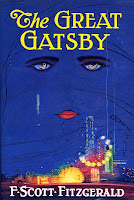When I browse the shelves in Borders, Waterstones or any other modern bookstore, I find myself disappointed. Partly because of the frustration I have at attempting to drown out the noise of the milk steamers and innane chatter from the inevitable Costa or Starbucks that resides within it's walls. But mainly because of the images that stare back at me. Only one in a handful of books have a cover that grabs me. So many of the covers are dull, lifeless, or just photgraphs of actors from the film, or a landscape that may have some relevance to the plot. And what upsets me most, isn't that I find them boring or uninspiring (although it does upset me, more than you know) But the thing I find most tragic, is that 99% of the time, I am sure that the cover art does not do any justice to the words it represents. Literary art lies within it's pages, whether it be a word, a sentence, a character, a name or the whole bloody thing! On those pages, someone has painstakingly created their art. Then some publishing company gets hold of it and sticks an everyday standard and predictable cover on the front of it.
So I ask again,what happened to all of the great cover art that used to be produced?!
It's no coincidence, I believe, that some (but of course not all) of the great books of all time, are also considered the books with the greatest covers of all time.
Bring back the art I say. Bring back the colour, the sketches, the off the wall and edgy designs! I love walking into an Oxfam or Age Concern and seeing all the bright, wierd and wonderful designs on the front of some of the old books. I should just as easily be able to achieve that in any modern bookstore. And maybe then I wouldn't be so peeved about the noise of the coffee shops.





